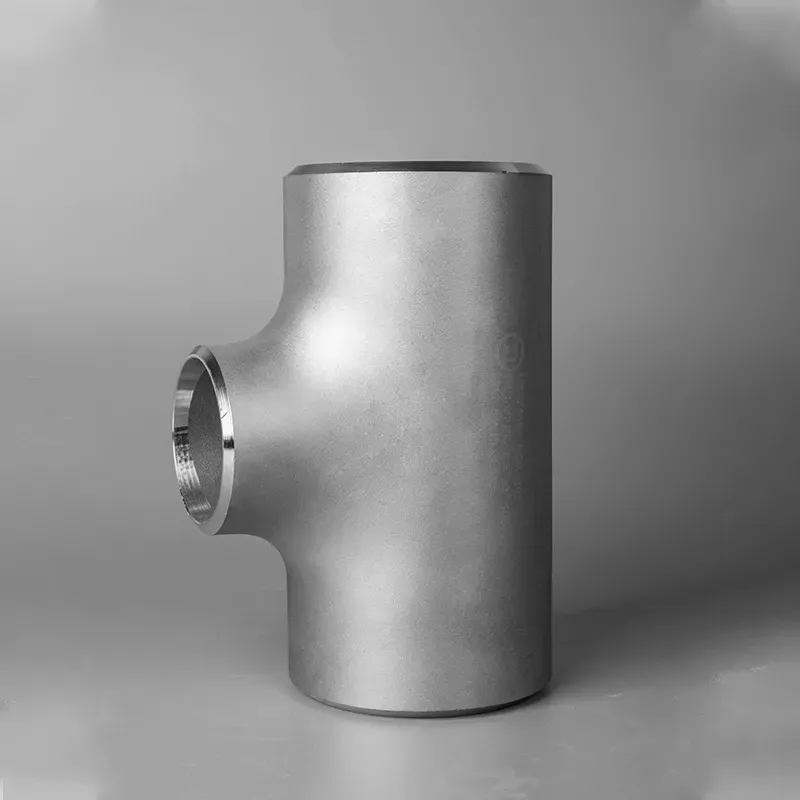-
Cangzhou Yulong Steel Co., Ltd.
-
Phone:
+86 13303177267 -
Email:
admin@ylsteelfittings.com
- English
- Arabic
- Italian
- Spanish
- Portuguese
- German
- kazakh
- Persian
- Greek
- French
- Russian
- Polish
- Thai
- Indonesian
- Vietnamese
- Zulu
- Korean
- Uzbek
- Hindi
- Serbian
- Malay
- Ukrainian
- Gujarati
- Haitian Creole
- hausa
- hawaiian
- Hebrew
- Miao
- Hungarian
- Icelandic
- igbo
- irish
- Japanese
- Javanese
- Kannada
- Khmer
- Rwandese
- Afrikaans
- Albanian
- Amharic
- Armenian
- Azerbaijani
- Basque
- Belarusian
- Bengali
- Bosnian
- Bulgarian
- Catalan
- Cebuano
- China
- China (Taiwan)
- Corsican
- Croatian
- Czech
- Danish
- Esperanto
- Estonian
- Finnish
- Frisian
- Galician
- Georgian
- Kurdish
- Kyrgyz
- Lao
- Latin
- Latvian
- Lithuanian
- Luxembourgish
- Macedonian
- Malgashi
- Malayalam
- Maltese
- Maori
- Marathi
- Mongolian
- Myanmar
- Nepali
- Norwegian
- Norwegian
- Occitan
- Pashto
- Dutch
- Punjabi
- Romanian
- Samoan
- Scottish Gaelic
- Sesotho
- Shona
- Sindhi
- Sinhala
- Slovak
- Slovenian
- Somali
- Sundanese
- Swahili
- Swedish
- Tagalog
- Tajik
- Tamil
- Tatar
- Telugu
- Turkish
- Turkmen
- Urdu
- Uighur
- Welsh
- Bantu
- Yiddish
- Yoruba

Oct . 13, 2024 03:43 Back to list
class 300 flanges
Understanding Class 300 Flanges A Comprehensive Overview
Flanges are integral components in piping systems, providing a reliable method for connecting pipes, valves, and other equipment. Among the various flange classes available, Class 300 flanges stand out due to their suitability for a range of industrial applications. This article delves into the characteristics, specifications, and applications of Class 300 flanges.
What is a Class 300 Flange?
The term Class 300 refers to the pressure-temperature rating of the flange as defined by the American Society of Mechanical Engineers (ASME) Standard B16.5. Specifically, Class 300 flanges can withstand a maximum pressure of 300 pounds per square inch (psi) at a designated high temperature. This rating makes them ideal for applications that require robust and reliable connections under considerable operational stress.
Materials and Construction
Class 300 flanges are typically made from various materials, including carbon steel, stainless steel, and alloy steel. The choice of material is crucial as it determines the flange's strength, corrosion resistance, and compatibility with different media. Carbon steel is commonly used due to its durability and cost-effectiveness, while stainless steel is preferred in corrosive environments.
Dimensions and Types
class 300 flanges

Class 300 flanges are available in different types, including welded neck, slip-on, blind, and threaded flanges. The dimensions of a flange, including its diameter and thickness, are standardized for convenience and interoperability. For Class 300, the flange thickness increases with the size to maintain structural integrity under pressure. These flanges are generally compatible with various pipe sizes, making them versatile for different installations.
Applications
Class 300 flanges find extensive use in multiple industries, such as oil and gas, chemicals, power generation, and water treatment. Their ability to handle high pressures and temperatures makes them suitable for critical applications, such as steam lines and high-pressure fluid systems.
Installation Considerations
Proper installation of Class 300 flanges is essential to ensuring the integrity of the piping system. This includes using the correct gasket material, maintaining appropriate torque during bolting, and ensuring proper alignment. Regular inspection and maintenance also play a crucial role in preventing leaks and failures.
Conclusion
In summary, Class 300 flanges are a vital component in many industrial processes. Their robust design and high-pressure capabilities make them suitable for demanding applications, while their availability in various materials and types ensures flexibility in different settings. Understanding the specifications and proper installation procedures for Class 300 flanges is essential for engineers and technicians working in the field. By choosing the right flange for the application, you can enhance system performance and reliability.
Latest news
-
ANSI 150P SS304 SO FLANGE
NewsFeb.14,2025
-
ASTM A333GR6 STEEL PIPE
NewsJan.20,2025
-
ANSI B16.5 WELDING NECK FLANGE
NewsJan.15,2026
-
ANSI B16.5 SLIP-ON FLANGE
NewsApr.19,2024
-
SABS 1123 FLANGE
NewsJan.15,2025
-
DIN86044 PLATE FLANGE
NewsApr.19,2024
-
DIN2527 BLIND FLANGE
NewsApr.12,2024
-
JIS B2311 Butt-Welding Fittings LR/SR 45°/90° /180°Seamless/Weld
NewsApr.23,2024











